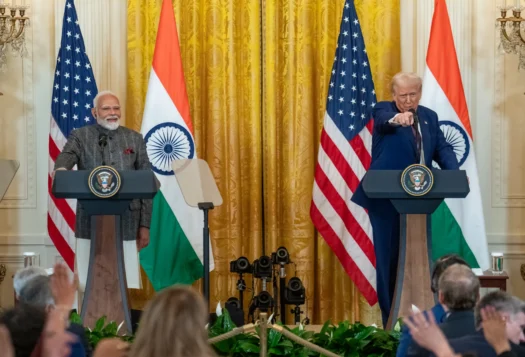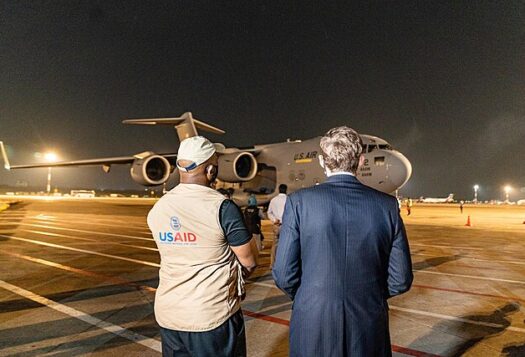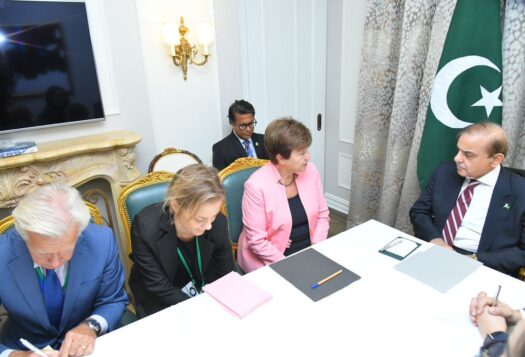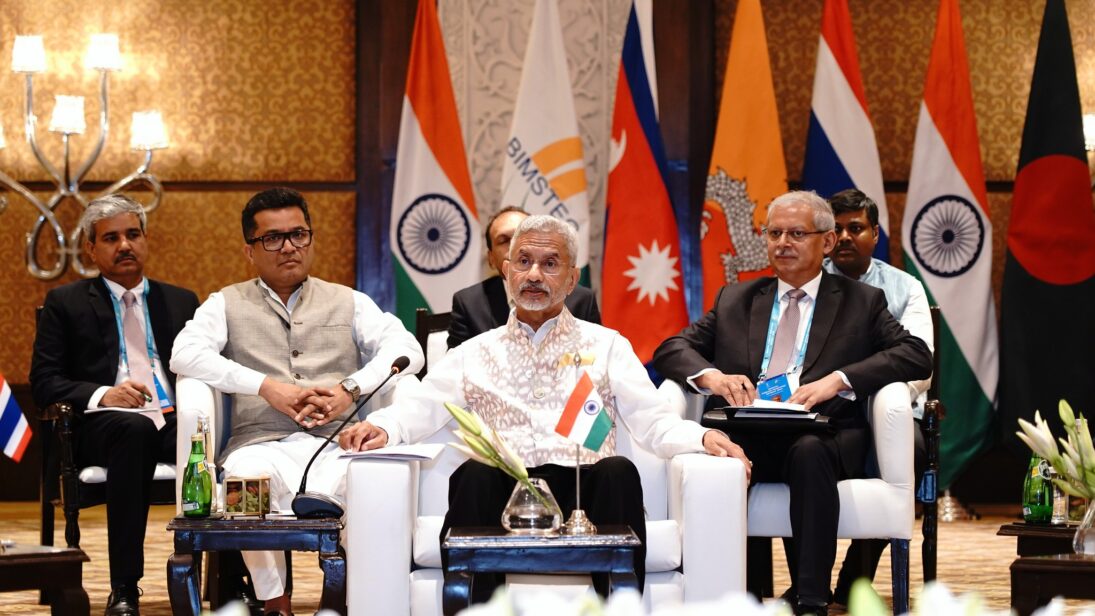
India’s External Affairs Minister, S. Jaishankar, recently hosted the Bay of Bengal Initiative for Multi-Sectoral Technical and Economic Cooperation (BIMSTEC) Foreign Ministers’ retreat in New Delhi. The meeting’s objective was to prepare outcomes for the upcoming BIMSTEC summit in Thailand. The anticipated signing of the Maritime Transport Agreement (MTA) is poised to be a consequential outcome of the summit, which will provide concessional port dues to various types of cargo from BIMSTEC countries, allow transshipment of cargo using other countries’ ports, and help simplify logistics to facilitate regional trade. The MTA is expected to significantly enhance India’s trade with the neighborhood by improving maritime connectivity across the Bay of Bengal. However, for the agreement to be fully operationalized, New Delhi will have to mitigate several internal and external challenges as well as take a leadership role in concluding negotiations for a BIMSTEC Free Trade Agreement (FTA).
MTA’s Benefits to India
BIMSTEC, consisting of India, Bangladesh, Bhutan, Nepal, Sri Lanka, Myanmar, and Thailand, was formed in 1997 to promote economic cooperation among the countries bordering the Bay of Bengal. The MTA was born out of the adoption of the BIMSTEC Master Plan for Transport Connectivity in 2022, jointly formulated by BIMSTEC and the Asian Development Bank to achieve enhanced connectivity and sustainable development in the region.
The South Asian Association for Regional Cooperation (SAARC) has been obsolete for several years, rendering BIMSTEC the only regional institution through which India can enhance regional trade.
The MTA’s significance for India can be attributed to three factors. First, while most international trade between India and the BIMSTEC countries (barring Bhutan and Nepal) is carried out through maritime routes, intra-regional trade remains at a measly 7 percent. This is due to the lack of robust connectivity among the ports of member countries, as emphasized by Indian Finance Minister Nirmala Sitharaman as far back as 2016. Given that maritime connectivity is the raison d’etre of BIMSTEC’s broader goals, the MTA can help member countries overcome this connectivity impediment in bolstering regional trade.
Second, the MTA will allow India to further integrate with the markets of Southeast Asian countries, which is a stated goal of New Delhi’s Act East Policy. India’s absence from regional FTAs in the Indo-Pacific, such as the Regional Comprehensive Economic Partnership, the Comprehensive and Progressive Agreement for Trans-Pacific Partnership, and the trade pillar of the Indo-Pacific Economic Framework, prevents it from gaining market access to Southeast and East Asian economies at reduced tariffs. Furthermore, India has opposed the inclusion of Southeast Asian countries in the Supply Chain Resilience Initiative – a policy initiative comprising India, Japan, and Australia. This is because Southeast Asian countries’ exports to India often originate from China, impacting the competitiveness of Indian products due to the cheap rates of Chinese goods. By offering concessional port fees, streamlining logistics, and serving as a bridge between South and Southeast Asia, the BIMSTEC MTA would enable member countries, including India, to establish direct linkages with each other and further integrate with each others’ economies.
Third, the South Asian Association for Regional Cooperation (SAARC) has been obsolete for several years, rendering BIMSTEC the only regional institution through which India can enhance regional trade. No SAARC summit has taken place since 2016 when India boycotted the summit scheduled to be held in Pakistan due to the Uri attack. Additionally, the ineffectiveness of the South Asian Free Trade Agreement (SAFTA) due to India-Pakistan hostilities has inhibited New Delhi from bolstering trade in the Indian subcontinent. Notably, the 2016 BIMSTEC Leaders’ Retreat, which took place right around the cancellation of the SAARC summit, reinvigorated conversations about the early conclusion of the FTA. This, along with the rise of China’s economic influence in South and Southeast Asia through its Belt and Road Initiative, makes bolstering trade with the BIMSTEC countries indispensable for India.
Obstacles to the MTA’s Implementation
Despite its benefits, the MTA’s potential to enhance regional connectivity is likely to be met with several internal and external obstacles.
The internal challenges to port connectivity in India, as detailed in this report by the Observer Research Foundation, include shallow water depth, unpredictability of tides, and inadequate port space, which affect the efficiency of the ports. The shallow depth of various regional ports, like Kolkata and Chattogram ports, means they are unable to house large vessels. Furthermore, several ports like Mongla, Chattogram, and Yangon suffer from uncertain tidal current patterns, which disrupts the scheduled berthing of ships. These port-related issues compromise the optimal usability of the ports, thus imposing substantial limitations on the MTA’s prospects.
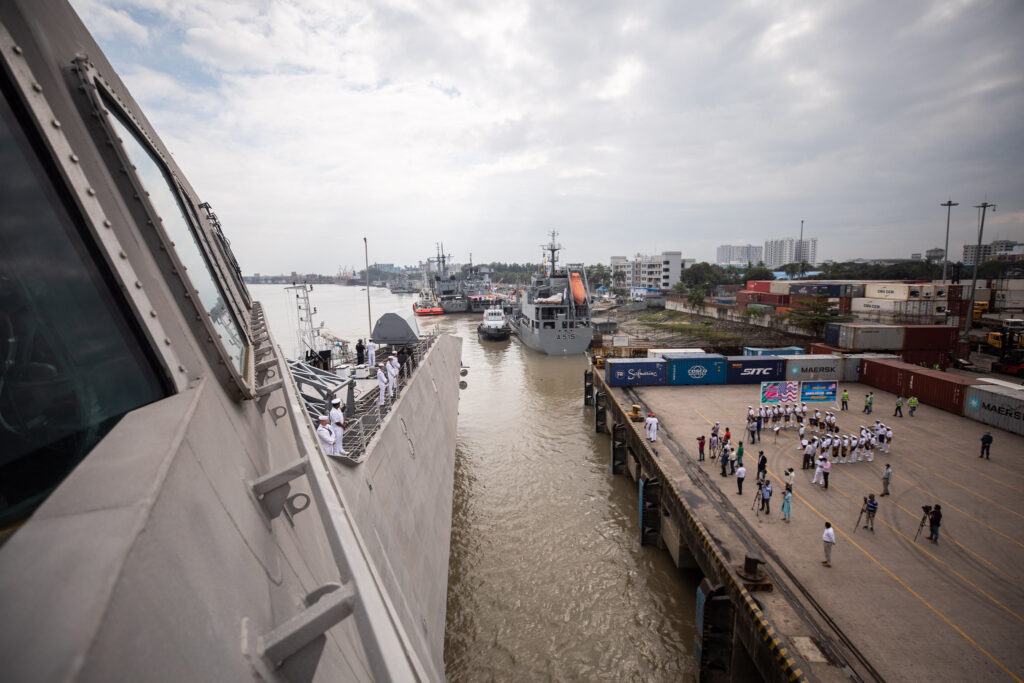
Several external issues, particularly domestic political instability in member countries, may also hinder the effective implementation of the MTA. For instance, political turmoil in Myanmar has already impacted the utilization of the Sittwe port – though the port is operational, analysts suggest the connectivity between Kolkata and Sittwe is more symbolic rather than practical. The lack of coastal shipping agreements between the member countries (except India and Bangladesh) for streamlining maritime trade routes as well as environmental concerns associated with various regional ports, such as Andaman and Nicobar Islands, Matabari (Bangladesh), and Thilawa (Thailand) can also introduce hurdles to the MTA’s implementation.
The Way Forward
The MTA can be expected to improve the regional economic integration among the BIMSTEC countries. However, while the MTA can lead to greater intra-regional trade and the establishment of regional value chains, the FTA is essential to secure market access at lower tariff rates. Therefore, a BIMSTEC FTA is indispensable to leverage the MTA.
[…] Regional integration is critical to India’s own economic growth and development and New Delhi needs to incentivize BIMSTEC countries to participate.
However, negotiations for a regional FTA would be a complex undertaking and require consistent pushing and leadership. For instance, RCEP was driven by ASEAN; CPTPP was revived by Japan; and India and Pakistan’s leadership was crucial in realizing the SAFTA in 2004. Therefore, as the largest and most influential country, the onus to lead FTA negotiations within BIMSTEC lies with India. Sri Lankan Foreign Minister Ali Sabry asserted this as well when he said that the impetus for boosting intra-regional trade must come from India.
While India must lead the charge on the FTA, it is vital to recognize that smaller countries remain concerned that India will dominate regional trade within BIMSTEC. To alleviate these concerns, India can ensure that free trade with New Delhi will not be inimical to smaller states’ interests. After all, regional integration is critical to India’s own economic growth and development and New Delhi needs to incentivize BIMSTEC countries to participate. It can do so, for example, by providing greater market access to the member countries’ products or reduced tariff rates to improve the competitiveness of their commodities in the Indian market..
In terms of India’s internal port-related issues, some of those pertain to geography and cannot be mitigated. However, several solutions suggested by experts, such as adequate space for docked containers, building ports away from cities to avoid congestion, and separate berthing facilities must be considered while developing new ports to leverage maximum performance. Similarly, it is critical to conduct an environmental impact assessment study before developing ports in ecologically sensitive areas and implement any mitigation measures suggested by experts.
During the recent BIMSTEC foreign ministers’ retreat, Jaishankar made it clear how BIMSTEC is key to India’s regional ambitions, stating that India’s initiatives such as the Neighborhood First outlook, the Act East Policy, and the SAGAR Vision all have a specific focus on the Bay of Bengal. Enhancing trade with the BIMSTEC countries through the timely and effective implementation of the MTA is thus necessary to realize those endeavors.
Also Read: BIMSTEC Revival: A Compelling Alternative to the BRI in the Bay of Bengal
***
Image 1: Ministry of External Affairs, India via Flickr
Image 2: U.S. Pacific Fleet via Flickr
